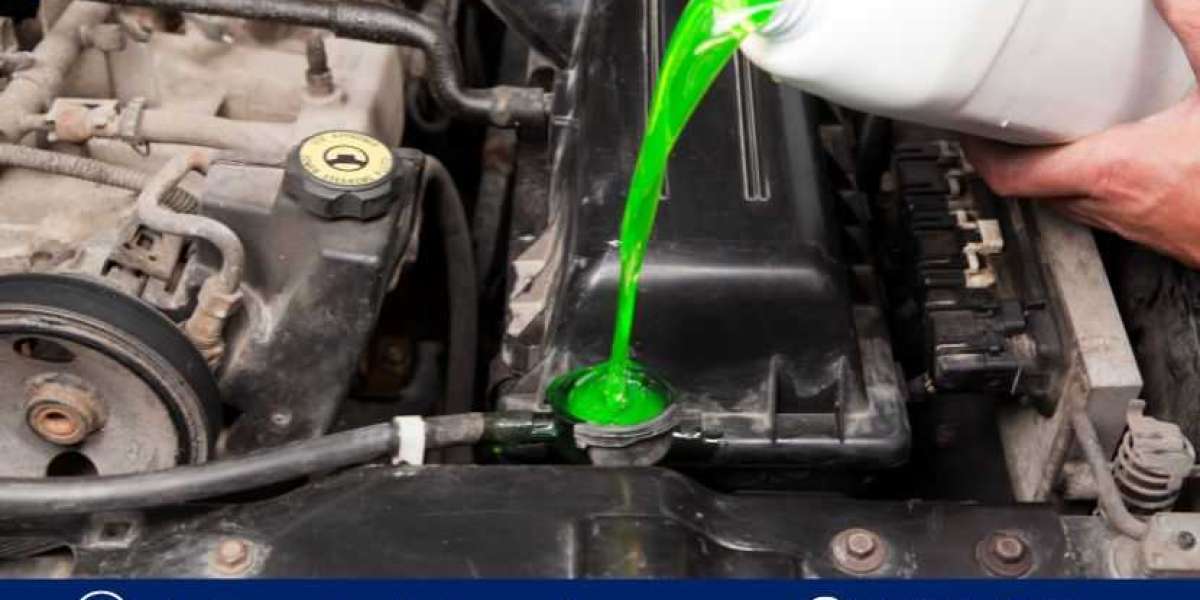Introduction
Automotive radiators are essential components in a vehicle's cooling system, designed to regulate the engine temperature and prevent overheating. With the rapid increase in automobile production globally, the demand for automotive radiators has seen consistent growth. Radiators are used across various types of vehicles, including passenger cars, commercial vehicles, and heavy-duty trucks, making the automotive radiator manufacturing sector a lucrative investment opportunity. An Automotive Radiator Manufacturing Plant Project Report provides a detailed blueprint for setting up a radiator manufacturing facility, focusing on key aspects such as market potential, raw materials, production process, equipment requirements, financial projections, and regulatory considerations. This report will help entrepreneurs and businesses explore the prospects of entering the automotive parts manufacturing industry by establishing a radiator production plant.
Market Overview
The global automotive radiator market is experiencing steady growth due to several driving factors:
- Increasing Vehicle Production : The continuous rise in global vehicle production, particularly in emerging economies, contributes significantly to the demand for radiators. As more vehicles are being produced, the need for radiators for both new models and replacement parts is growing.
- Aftermarket Demand: Radiators are not only needed for new vehicles but also for replacing old or damaged units in vehicles that are already on the road. This aftermarket demand provides a stable revenue stream for radiator manufacturers.
- Technological Advancements: The automotive industry is evolving with advancements such as electric vehicles (EVs) and hybrid cars, which require specialized radiators. Manufacturers need to adapt to new cooling technologies, including those that cater to electric batteries and other vehicle components.
- Environmental Regulations: Increasing emphasis on fuel efficiency and reducing vehicle emissions has made the development of high-performance radiators critical. Radiators must be designed to work efficiently within the cooling system, ensuring that engines operate within optimal temperature ranges while meeting regulatory requirements.
- Growth of Emerging Markets: The automotive sector in developing nations is growing rapidly, driving up the demand for radiators for both domestic vehicle production and international exports.
The automotive radiator manufacturing industry is thus poised for substantial growth, with both OEM (original equipment manufacturer) and aftermarket opportunities.
Get a Free Sample Report with Table of Contents@
Business Plan and Feasibility Study
Setting up an automotive radiator manufacturing plant involves a comprehensive business plan and feasibility study. Key components of this plan include:
1. Market Analysis
- Demand Analysis: Understand the demand dynamics for radiators in various segments, including OEM and aftermarket sales. Analyze vehicle production trends, the types of radiators required for different vehicles, and regional demand patterns.
- Competition: Study existing radiator manufacturers, their market positioning, and the competitive landscape. Identify product differentiation opportunities such as high-efficiency radiators, lightweight materials, or advanced cooling technologies.
- Pricing Strategy: Establish a pricing model based on production costs, quality, and market competition. Consider economies of scale, and ensure the pricing strategy remains competitive without compromising quality.
2. Location and Facility Setup
- Proximity to Raw Materials: Choose a location near suppliers of raw materials such as aluminum, copper, and steel, which are commonly used in radiator production. Reducing transportation costs for raw materials will improve cost-efficiency.
- Infrastructure: The plant should be situated in an area with adequate infrastructure, including access to water, electricity, transportation networks, and waste disposal facilities.
- Labor Availability: Ensure the facility is located in an area with access to skilled labor, particularly in engineering, machine operations, and assembly line processes.
3. Financial Projections
- Initial Investment: Calculate the capital investment required for land acquisition, building construction, machinery procurement, and raw materials.
- Operating Costs: Estimate ongoing operational costs such as labor, raw materials, utilities, maintenance, and packaging.
- Revenue Generation: Project revenue based on production volume, pricing, and market demand.
- Profitability: Conduct a break-even analysis to determine when the plant will become profitable and assess potential return on investment (ROI).
4. Regulatory Compliance
- Quality Standards: Ensure compliance with industry standards such as ISO 9001 for quality management systems. Obtain certifications that meet customer expectations for product quality.
- Safety Regulations: Follow workplace safety regulations and establish a safety management system to protect workers from potential hazards.
- Environmental Compliance: Adhere to environmental standards for waste management, emissions, and the use of eco-friendly materials.
Raw Materials and Ingredients
The primary raw materials used in the manufacturing of automotive radiators include:
- Aluminum: The most common material used in radiator cores due to its excellent heat transfer properties, corrosion resistance, and light weight. Aluminum is also relatively cost-effective compared to copper.
- Copper: Often used in heat exchangers, copper offers superior thermal conductivity but is more expensive than aluminum.
- Steel: Used for structural parts and radiator frames.
- Plastic: For producing radiator end tanks, connectors, and other non-heat-exchange components.
- Rubber: Used for seals and gaskets to prevent leaks and ensure efficient functioning of the radiator.
- Coolant: Essential for testing radiators during the production process to ensure they operate under real-world conditions.
Raw Material Sourcing
It is essential to establish relationships with reliable suppliers of raw materials to ensure a steady supply chain and maintain consistent product quality.
Production Process
The production process for automotive radiators typically follows these steps:
1. Design and PrototypingRadiator design is a crucial step in the production process. Engineers create designs based on the vehicle's requirements, such as heat dissipation capacity, space constraints, and material preferences. Prototypes are produced and tested to ensure that they meet performance and durability standards.
2. Raw Material PreparationRaw materials such as aluminum, copper, and plastic are prepared for manufacturing. This may involve cutting, shaping, or alloying the materials to meet specific design requirements.
3. Core Production
The radiator core is produced by extruding or forming aluminum or copper tubes and fins. These components are then joined through welding or brazing. The core is the heart of the radiator, responsible for dissipating heat.
4. AssemblyThe core is assembled with the end tanks (which are typically made of plastic or metal) and other structural components. The radiator tanks are attached using adhesives, welding, or other joining techniques.
5. Pressure TestingOnce assembled, the radiator undergoes pressure testing to ensure that it can handle the operating conditions of a vehicle’s engine cooling system. This is done by pressurizing the radiator and inspecting it for leaks.
6. Finishing and CoatingThe finished radiator undergoes a coating or painting process to protect against corrosion. This is especially important for radiators exposed to harsh environmental conditions.
7. Packaging and DistributionThe final product is packaged carefully to avoid damage during transportation. Packaging materials should be durable and suitable for long-distance shipping.
8. Quality ControlRigorous testing is conducted at different stages of production to ensure the radiator meets all technical specifications and regulatory standards. This includes testing for performance, durability, and leak resistance.
Machinery and Equipment
The key machinery and equipment required for automotive radiator manufacturing include:
- Extrusion Machines: To produce tubes and fins for the radiator core.
- Brazing Furnaces: For joining metal components like the core, tubes, and fins.
- Welding Machines: For welding end tanks and other structural components.
- Pressure Testing Equipment: To test the radiator's ability to withstand pressure.
- Coating and Painting Equipment: For applying protective coatings to prevent corrosion.
- Packaging Machines: For securely packaging the finished radiators.
- Quality Control Instruments: For testing thermal performance, strength, and other parameters.
Labor and Workforce
The workforce required for a radiator manufacturing plant includes:
- Production Operators : Skilled workers who operate machinery and manage the production process.
- Quality Control Inspectors : Ensure the radiators meet the necessary performance and quality standards.
- Maintenance Technicians : Responsible for machine maintenance and troubleshooting.
- Assembly Line Workers : For assembling the radiator components.
- RD Engineers : To design and test new radiator models and optimize existing ones.
- Sales and Marketing Team : To promote the radiators, build relationships with customers, and handle distribution.
Training and upskilling workers are crucial for maintaining efficiency and ensuring high-quality production.
Cost Estimation
Setting up an automotive radiator manufacturing plant involves several types of costs:
- Capital Investment : The cost of land, building construction, machinery, and initial raw material procurement.
- Operating Costs : Costs for labor, raw materials, utilities, packaging, and distribution.
- Marketing and Distribution : Advertising, transportation, and warehousing expenses.
- Maintenance and Overhead : Regular maintenance of machines and ongoing facility management costs.
Marketing and Distribution
To succeed in the automotive radiator market, manufacturers need to employ a well-rounded marketing strategy. Here are some key approaches:
- Brand Positioning : Create a strong brand image that emphasizes the reliability, durability, and high performance of your radiators.
- Sales Channels : Develop relationships with OEMs and automotive parts distributors. Consider selling directly to vehicle manufacturers or through authorized resellers and online platforms.
- Target Market : Focus on both the OEM and aftermarket segments, as both offer significant revenue potential.
- Export Opportunities : Explore international markets, especially in regions with growing automotive production, such as India, China, and Southeast Asia.
An effective distribution strategy will help ensure that radiators are available where they are most in demand.
Media Contact
Company Name: Claight Corporation
Contact Person: Lewis Fernandas, Corporate Sales Specialist — USA
Email: sales@expertmarketresearch.com
Toll Free Number: +1–415–325–5166 | +44–702–402–5790
Address: 30 North Gould Street, Sheridan, WY 82801, USA
Website: www.expertmarketresearch.com
Aus Site: https://www.expertmarketresearch.com.au














